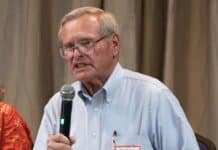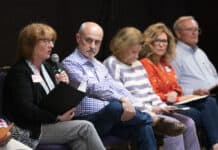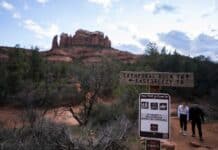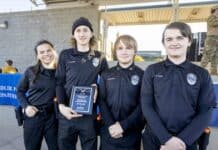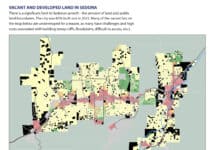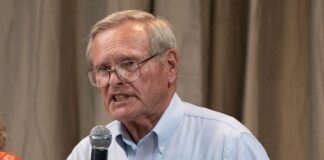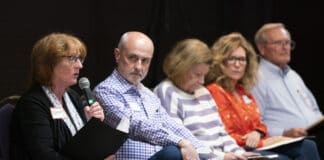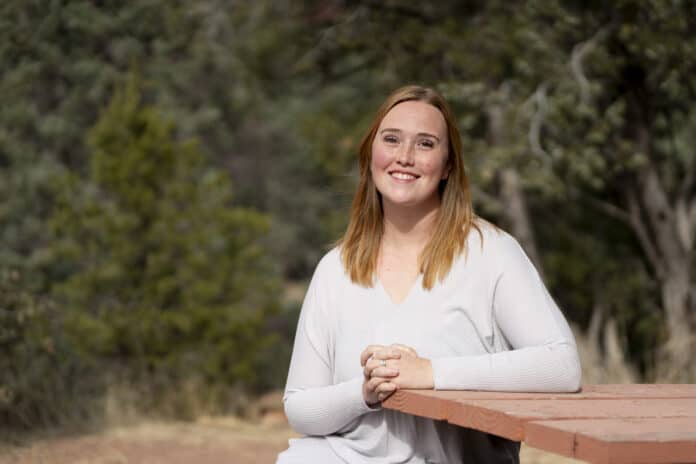
Morgan Bailey, who recently turned 25, said she woke up on the morning of Dec. 18 excited to be alive. She started her day by reciting three things for which she was grateful, a system she has been practicing since she had a stroke on May 30, 2021, while working at the Verde Valley School.
“This morning it was my mom, and then No. 2 was my dogs Moose and Gracie and three was the sun, because [while] the sun’s not out today I’m very grateful when it is out,” she said.
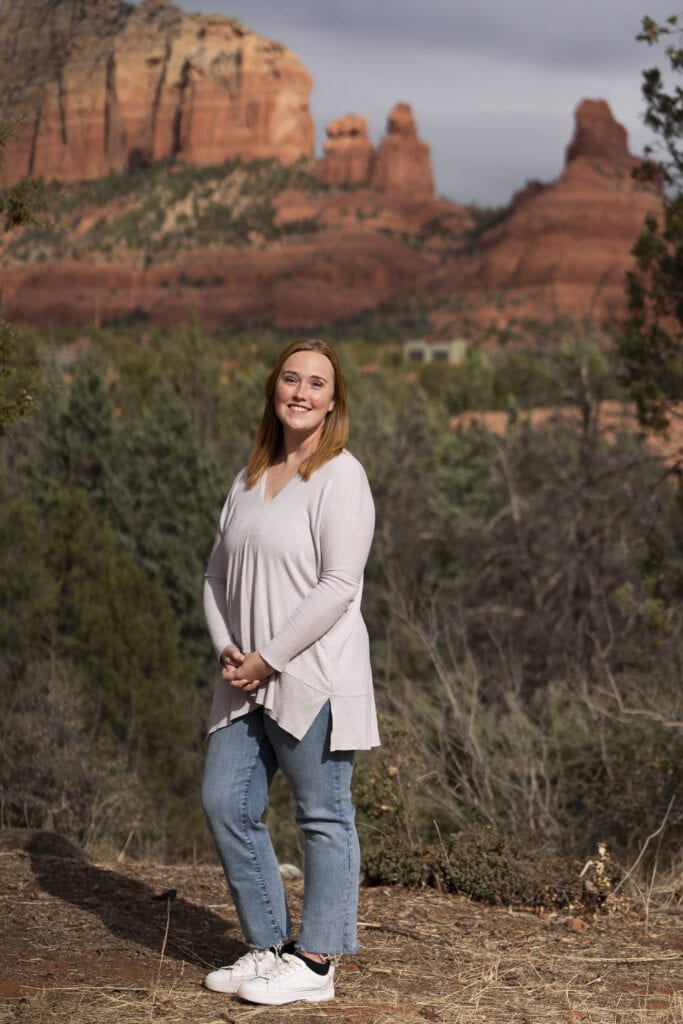
“Morgan is pretty special,” her mother Robin Bailey said. “She was a regular kid, going through life, got accepted into [the Sandra Day O’Connor College of Law at Arizona State University] which was a big deal. Then she had her massive stroke, brain bleed and she’s learning how to survive and live to the fullest. She’s very positive … it’s like she was meant to have this happen to her because she’s so positive. But she’s just trying to learn her journey to how this is going to all play out.”
Four years before Morgan’s stroke, she was diagnosed with three arteriovenous malformations deep within her brain.
“AVMs happen when a group of blood vessels in your body forms incorrectly,” the Johns Hopkins University School of Medicine’s website stated. “
In these malformations, arteries and veins are unusually tangled and form direct connections, bypassing normal tissues. This usually happens during development before birth or shortly after. Most people with AVMs have no initial symptoms or problems. Instead, the problem is discovered when health care providers treat another unrelated health concern. Sometimes the rupture of one of the blood vessels in an AVM will bring the issue to medical attention.”
For Morgan, that occurred on what she called the “day my brain exploded,” when she was working on putting together VVS’s 2021 commencement ceremony.
“All of the sudden I started to not feel well,” Morgan Bailey said. “I had an excruciating headache. All of a sudden my right side went numb. As soon as that happened, within two seconds I told my best friend Galen, ‘Something is wrong with me.’ And she immediately knew what it meant. She said, ‘Call the hospital,’ and then five minutes after that I don’t remember.”
Bailey has no recollection of the next month of her life, and although several people close to her have said it’s better that way, she said she wants and needs to recall it.
“When I first got out of the hospital I came back to Sedona,” Bailey said. “I could not walk. I was in a wheelchair, and I had a cane for a while. Because my right side is still paralyzed from a stroke that I had due to the AVM. When I first got out of the hospital they were trying to send me to [physical and occupational therapy] and speech in Phoenix. They wanted me to drive therethree times a week and it was not working for me … Driving back and forth was exhausting. That’s when I came up here and did [physical therapy] and [occupational therapy] and speech like it was my job … It was for like a year and a half I did it. And I went to EntireCare on Dry Creek Road and I adore them.”
When Bailey started speech therapy, she was no longer able to name even two people that she knew. She could see them and think about them, but her aphasia and loss of the ability to express herself correctly through speech prevented the words from coming out.
“Learning to talk again was a lot of work,” Bailey said. “My speech therapist, Matt, was amazing. We would sit and do exercises all the time, such as he would have me for a minute straight name animals. Each time I got better, but it was hard because I know a bunch of animals, but I can’t think of the names of them.”
Requests such as asking for food also came out as requests to use the bathroom.
“I remember my mom was there every single day, every morning, I would wake up and I would be like, ‘Where’s my mom?” Bailey said.
Robin Bailey said learning patience was her biggest takeaway from the experience.
“With her, it’s made me have to slow down and to shut my mouth, because I’m like East Coast Jersey girl,” Robin Bailey said. “It’s hard for me to control my mouth sometimes. I’ve learned with her to be more softer, and not so hard. It’s helped me in different aspects of my life as well. I think it’s really like getting out of the box and looking at the big picture versus getting caught up in the hustle and bustle, even though we’re laid back here. I came from East Coast. So everything is go, go, go, go.”
One of the most common questions that Robin Bailey has been asked about Morgan’s experience is how a parent copes with having a child experience a medical emergency and recovery.
“I think because I am a retired police officer, and with all my training, it really put me in that mindset to go into that not panic [state], because I’m not that kind of person,” Robin Bailey said. “Unless it is just my personality, because my personality is like that, too. But I think my police training put me into that tactical mode for the two months. I was with her in the hospital, and got me through each day.”
Morgan’s daily life has changed in a number of ways. She was right-handed and has had to relearn to use the right side of her body that was paralyzed.
“I can’t use my right hand to brush my teeth or brush my hair,” Bailey said. “It’s difficult because there are a lot of things that I can do, but I can’t put on a hair tie.”
She regained her driver’s license about 18 months ago but only uses it to get around Sedona. Otherwise she walks up to a mile to get to appointments or to get to the Sedona Heritage Museum, where she volunteers.
“She’s seems to have made a lot of progress, and I think it’s helped her volunteering here,” museum executive director Nate Meyers said. “She mentioned to me that she feels like it’s been good for her to stretch herself and work on new things, being a part of the team here. That makes me feel good to know that the museum can can be a place for a young person who’s gone through such a tragic health scare to be able to find a home here.”
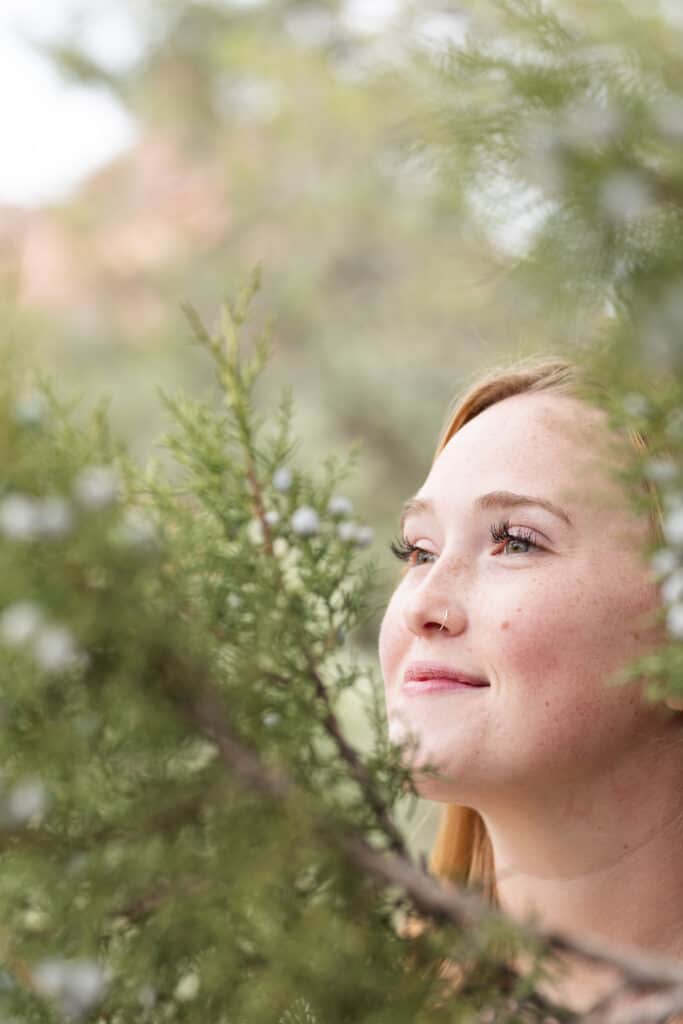
“We began working with Morgan a few years back through her business Sedona Picnics and appreciate her great attitude and strong work ethic and realized she’d be a great addition to our museum team,” SHS volunteer coordinator Julie Holst said. “She never fails to ride to work with a smile on her face and an upbeat attitude.”
“When I’m walking down the street, people are probably driving by going, ‘She has a really weird limp,’” Bailey said. “Or, ‘Why does her hand not work?’ So I just want people to know and to talk [about AVM]. It needs to become a thing that people talk about.”
To further that conversation, Bailey maintains a blog about her condition at livingwithanavm.com and on Instagram and Tiktok at @livingwithanavm. Through her blog and social media channels, she documents the “roller coaster 24/7” of her life.
“I could go on forever, because it’s been a journey,” Robin Bailey said. “[Morgan] has great ideas. This year, we went to San Francisco to do the AVM walk that she’s been wanting to do for a couple years. It was crazy when we arrived there she had all these people that knew her that she had never met and knew her from Instagram.”
@livingwithanavm TAAF WALK 💪🏼💗 #arteriovenousmalformation #avm #avmrupture #avmsurvivor #crainiotomy #gammaknife #stroke #strokesurvivor #taafwalk
♬ A Sky Full of Stars – Coldplay
Among those well-wishers was Ahmet Kartal, a medical student in Germany who recently messaged her.
“You are doing a fantastic job of publicly sharing your AVM journey with everyone else,” Kartal wrote. “This gives many patients hope and helps other people who are currently in the situation you were in about 1½ years ago a lot. Also, stories like yours are the reason why I wanted to become a neurosurgeon in the first place.”
“It’s been pretty magical and beautiful to see that in person,” Robin Bailey said. “When we went to the walk, it was beautiful. Those kids that have had the similar thing as her with the AVM and bleed and stroke. The parents were coming up to me saying, ‘You have no idea the impact [Morgan’s] had on them. So it’s been pretty beautiful.


